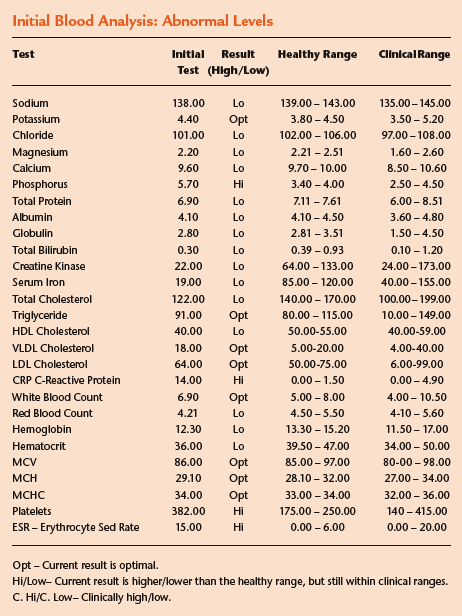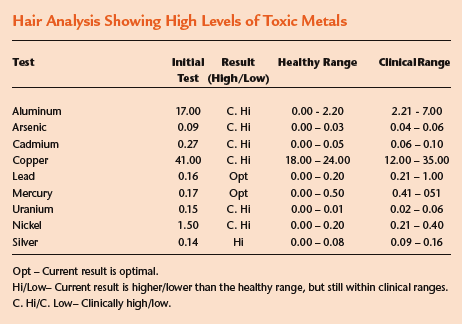Dealing with a worried parent can sometimes be a little tricky. While they often would not even question recommendations for themselves or the side effects of the drugs they take, prescriptions for their tiny counterparts are subjected to rigorous research on the Internet, followed by endless questions to their doctor.
At 10 years old, the patient was a good 4'11," but only 77 lbs and suffered from frequent loose stools (sometimes five or more per day) and was forced to get up at least twice a night to have bowel movements. She had an extremely sensitive stomach with bouts of abdominal pain and blood in her stool. A gastroenterologist checked her for bacteria, lactose intolerance, fructose intolerance and celiac's disease, and did an endoscopy and colonoscopy before finally diagnosing inflammation of the small intestine appearing to be early IBD, which two doctors said would likely become Crohn's disease.
They prescribed rifaximin to coat the lining of the intestines and promote healing, along with methotrexate and enteral nutritional therapy to rest the digestive system.1 Her parents balked at these recommendations. Not only were they leery of giving their daughter drugs that are also used in chemotherapy treatment,2 but, as her mother said, "It doesn't seem feasible to have a shy 10-year-old walking around with a feeding tube hanging from her nose."
After hearing that chemotherapy drugs were the best option for their daughter, her parents were a little anxious about what my recommendations would entail. One of the easiest ways to quell parental anxiety is with diagnostic testing. I explained that every disease, nutrient deficiency and inflammatory processes can be measured and diagnosed with various forms of laboratory testing, such as blood work, hair analysis, urinalysis and toxic element challenge. These findings give patients and their families a visual of what is going on in the body and how certain nutrients can improve those values. If a blood test reveals a high C-reactive protein (an inflammatory marker) and you recommend a natural anti-inflammatory like ginger/tumeric to be taken for three weeks, and then recheck that same marker, it will tell you whether those nutrients are working. If the C-reactive protein decreases, it is diagnostic proof that what you've been doing has worked.
We started by ordering some blood tests and a hair analysis to look at toxic elements and essential elements in her body. Because of the patient's weight and frequent bowel movements, malnutrition was a major concern. In the blood test, we saw low levels of things like chloride, sodium, magnesium, calcium and protein. These are indicators of nutrient-absorption problems and dehydration. We also found a low overall cholesterol level with an insufficient HDL level. This could be very dangerous and disruptive to her growth process because cholesterol is used to build and maintain cell membranes, produce sex hormones, aid in the manufacture of bile (which helps digest fats) and helps metabolize fat-soluble vitamins like A, D, E and K.3
Low iron levels suggested anemia and were likely causing the low red blood count. This reduces her ability to transport oxygen and other nutrients and can also affect her body's ability to heal and repair itself. The high CRP and ESR showed tissue inflammation, likely caused by the IBD while the low creatine kinase is a chronic wasting symptom common in patients with reduced muscle mass. On top of these issues, more problems appeared in the hair analysis with high levels of toxins, especially nickel, arsenic, aluminum, cadmium, uranium and copper. It's highly likely that the toxic elements were a primary cause of her IBD.4-6 Copper in particular has been linked to gastrointestinal distress, and other toxins cause damage to organs such as the kidneys and liver, making expulsion of toxins even more difficult.
Each recommendation made to this patient was based on the test results seen above. For the first two weeks, I recommended vitamins to aid with digestion, heal the gut and replenish her vitamin and mineral stores. They included several digestive aids that each targeted a slightly different digestive issue, B12 to help with the anemia, egg-white protein powder and a green drink to boost her nutrient intake. After a few weeks, she was to add in some fish oil, a multimineral, vitamin C with ribose (which buffers the vitamin C, minimizing gastrointestinal distress), calcium, magnesium and a chelator, which would will help with the elimination of toxins.


Her mother's only complaint with my recommendations was that there were too many vitamins (16 total). She requested I give her a list of only what would be most beneficial for their daughter. I simply replied, "She will not feel better if she takes on this challenge half-heartedly. Doing only a portion of what is recommended will leave out vital nutrients and healing properties which are necessary for her recovery."
I asked them to retest the blood work in two months so we could re-evaluate the patient's status, but when I finally received her blood test almost four months later, I noticed that nothing had really changed. In fact, some areas were actually worse than before. When I sat down with the patient's mother, she confessed that after hearing completely opposite points of view from their gastroenterologist and me, she had been unsure of how to proceed. The gastroenterologist had told them to avoid vegetables because they were difficult to digest, while I had encouraged a whole-foods diet with lots of vegetables to get more nutrients into her body. They had decided to try a very bland, low-fiber diet in conjunction with a few digestive aids and the chelators.

Once her daughter started to feel better, she planned to add the remainder of the supplements recommended; however, her daughter got worse. So they stopped using any of the vitamins.
Seeing the numbers for their daughter's condition worsen kicked this family into gear. They started following my recommendations to the letter. Lo and behold, the anemia was better a few months later. She had more energy and no abdominal pain at all. She was playing softball, spent a week at camp and was sleeping great. Her mother said, "She gets to be a normal kid now." She was also up to a much healthier 93 lbs. One of the most significant changes was seen in the inflammation and wasting markers.
While it was great that this young girl felt better, it was also nice to have these diagnostic tests to give her parents a visual of their daughter's improved state of health. These markers will act as guideposts as she continues her treatment and works to reduce her body's levels of toxic elements.
References
- Drugs.com: information about rifaximin. www.drugs.com/mtm/rifaximin.html
- Drugs.com: information about methotrexate. www.drugs.com/methotrexate.html
- Cholesterol: metabolism, biosynthesis, etc. http://themedicalbiochemistrypage.org/cholesterol.html
- Mercury and food intolerances: common causes of chronic conditions related to leaky gut and intestinal dysfunction. www.flcv.com/leakyghg.html
- Dartmouth Toxic Minerals Research Program. www.dartmouth.edu/~toxmetal/metals/questions/mercury.html
- Safety and Health Topics: Toxic Metals. U.S. Department of Labor. www.osha.gov/SLTC/metalsheavy/index.html
Dr. Van D. Merkle, president of Science Based Nutrition, is a diplomate of the American Clinical Board of Nutrition and the American Board of Chiropractic Internists. He is also a diplomate of the recently formed Chiropractic Board of Clinical Nutrition and currently serves as vice president. Dr. Merkle has practiced in the Dayton, Ohio area for more than 25 years, and hosted the call-in radio talk show "Back To Health, Your Guide to Better Living" since 1995.




